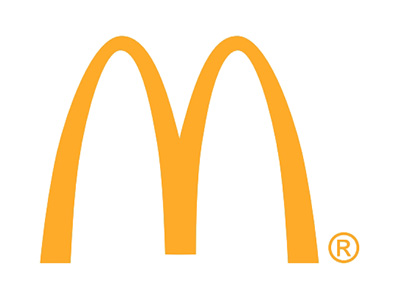麦当劳公司 (MCD.US) 2025年第二季度业绩电话会
文章语言:
简
繁
EN
Share
Minutes
原文
会议摘要
McDonald's achieved global sales growth and market share gains, particularly in chicken, through value platforms, marketing, and new menu items. Despite U.S. challenges, the company remains optimistic, investing in technology, beverages, and restaurant openings, aiming for strong financial targets and long-term growth.
会议速览
In the second quarter of 2025, McDonald's achieved growth in global system sales and comparable sales, especially in international operating markets and franchised markets. The company effectively increased customer traffic through measures such as optimizing value and affordability platforms, innovating menus, strengthening marketing strategies, and accelerating the development of new restaurants. In the US market, despite a decrease in visits from low-income consumers, McDonald's maintained good performance by continuously optimizing value meals and introducing new items such as snack wraps. In the future, the company will work closely with franchisees to further consolidate its leadership in value and affordability.
McDonald's is accelerating its "Golden Arches" strategy through digital means, including collaborating with Google to develop edge computing to improve restaurant operational efficiency; launching Ready on Arrival technology to reduce waiting time for food pickup; and expanding loyalty programs to attract over 18.5 million active users in 90 days. These measures aim to optimize customer experience, enhance brand loyalty, and utilize data and technology to improve operations.
McDonald's second quarter global same-store sales increased by 3.8%, with improvements seen in all markets, especially in France and the UK after the launch of new products such as the Big Arch. The company has been consistently adjusting its strategies to enhance product attractiveness and customer satisfaction, while also promoting its best hamburger products globally in order to further drive performance growth.
The conversation discussed McDonald's expansion plans in over 80 markets, as well as performance growth strategies in markets such as China and Australia. It highlighted the success of innovative products and marketing strategies such as Hot Honey Chicken, Wings, and the Minecraft marketing campaign, emphasizing the goal of driving global market share growth through optimizing the menu, enhancing value positioning, and strengthening marketing partnerships.
McDonald's achieved strong restaurant profit margins in the first half of the year, benefiting from franchise performance, despite facing pressure from consumer spending and cost challenges. The company expects the full-year adjusted operating profit margin to remain in the mid to high 40% range, while also planning to open approximately 2200 new restaurants globally. McDonald's is committed to advancing digital transformation and strategic growth priorities to achieve long-term profit growth and create shareholder value.
As one of the most culturally relevant brands in the world, McDonald's has maintained its brand influence through continuous value, affordable pricing strategies, world-class marketing, and menu innovation. Recent activities such as the Minecraft movie event and being named the most valuable restaurant brand by Cantor highlight McDonald's brand trust and global consistency. The company is focusing on controllable factors and execution through global leadership planning to lead the industry's future through scale advantages and global influence.
Discussed McDonald's value and affordability perception among different consumer groups in the United States, especially the performance of loyal members and m-value program users, pointing out the effectiveness of loyalty programs and m-value programs and their positive impact on consumption frequency, while analyzing the perception differences between different markets and comparison with competitors.
Discussed the menu pricing issue of McDonald's in the international market, pointing out that the current pricing is too high, affecting consumer perception of value, and needs to be adjusted to enhance market competitiveness. The international operations market has gained an advantage in terms of value perception through reasonable pricing strategies and effective promotional activities. Emphasizing the importance of menu prices on consumer perception, plans to collaborate with franchisees to optimize pricing strategies, especially in the American market, to improve consumer awareness of the brand's value.
Discussed the positive sales momentum in the US market in the third quarter, especially the good market feedback for Snap Wraps products. Looking ahead, analyzed the sales trends and dynamics in the US market under the backdrop of launching attractive value menus and marketing strategies. At the same time, mentioned the challenges of foot traffic facing the industry and expressed optimism towards future development.
Discussed the challenges facing the catering industry, including declining traffic volume in QSR and consumer environment differentiation, with pressure on low- and middle-income consumers and continued growth in high-income consumers. Companies expect these trends to continue, but are confident in their marketing and menu activities for the year. Reviewed sales trends from the beginning of the year until now, emphasizing optimistic expectations for the second half of the year, especially in Q3, while also mentioning strategies to address value and affordability adjustments.
Discussed the reasons for the strong performance of the International Operations Market (IOM) in the recent quarter, emphasizing the establishment of a foundation of value and affordability, including the implementation of daily discount platforms and entry-level product lines. In addition, the successful execution of menu and marketing activities, such as Minecraft activation, promotion of Chicken Big Mac in Germany, launching of Big Arch in France and the UK, as well as the introduction of Hot Honey Chicken and MC Wings in Australia, all played a key role in improving performance. These strategies reflect the three core elements of the Accelerate Arches strategy, namely value menu innovation, marketing, and market adaptability, indicating that this growth trend may be sustainable and structural.
Discussed the European beef prices rising by 20% due to supply issues, but the fast food industry has maintained its market competitiveness through low unit pricing strategy. At the same time, the company continues to improve operational efficiency and customer satisfaction. Although technological innovation is still in its early stages, it is expected to bring cost savings and sales growth, and its effectiveness is being evaluated.
Discussed the benefits of McDonald's technological upgrades on consumer, restaurant and company platforms, including increasing customer frequency, improving service speed, enhancing employee experience, lowering costs, and improving operational efficiency. Emphasized the importance of loyalty programs in increasing customer frequency, and looked forward to the potential for further optimizing restaurant experiences and reducing costs through automation, IoT, and AI technologies in the coming years.
Discussed whether the downward trend in consumption among middle- and low-income consumers is continuing, and the reasons why the increase in loyalty program participation from 10.5 times to 26 times has not led to an increase in transaction volume. Analyze the potential impact of expanding the loyalty program on consumption trends.
The dialogue discussed the improvement of middle-income in the second quarter, as well as the issue of the small scale of the current loyalty program. It pointed out the significant decline in low-income consumer groups and the industry's excessive reliance on these consumers. Emphasis was placed on the importance of increasing the number of active members to increase consumption frequency. Currently, loyalty programs in the American market cover about one-fourth of consumers, while in the Chinese market, it is close to 90%, showing a higher potential for benefits. At this stage, overall revenue has not yet fully manifested, but this is the goal for future development.
Discussed the issues of actual income decline and anxiety faced by low-income consumers, as well as the decrease in visits to the fast-food industry. Analyzed the reasons why consumers may turn to home-cooked meals or choose more economical dining options. Meanwhile, from an international perspective, pointed out the performance of family pressure and value consciousness in different markets, emphasizing the importance of brands continuously optimizing value and affordability strategies to attract all types of consumers.
The conversation discussed the potential growth trend of Gna's expenses in the second half of the year relative to system sales, and clarified the related situation. In addition, it was mentioned that the beverage market is seen as a major opportunity, with a lot of testing and investment being conducted to explore its commercial potential.
Discussed the huge potential of the beverage market and its higher profitability compared to food, emphasizing the investment focus of the second half of the year, especially in the fourth quarter. Through previous tests, it was found that consumers prefer slight adjustments to existing recipes rather than complete customization, so the current test has introduced a wider range of beverage options to explore market reaction, while also mentioning the investment cycle characteristics of technology and digital transformation projects.
The conversation discussed the positioning of beverages on the value menu, emphasizing that coffee and other beverages serve as a means to attract customers, while also pointing out the market opportunity for high-profit beverages. Mentioning pricing strategies with competitors, it was indicated that not all beverages need to be placed on the value menu, but instead using pricing advantages to attract customers and maximize profits.
Discussed the difficulty of achieving a nationwide uniform price point under cost differences and inflation pressures. Emphasized the importance of a nationwide uniform price point for the brand, while also pointing out the need to respect wage differences in different regions. It was suggested to find solutions through communication and cooperation with franchisees, such as introducing measures like snack vouchers with uniform prices.
The discussion focused on the key factors that may influence the development pipeline beyond 2026 in the coming years, including changes in profit margins and the economic conditions of stores, and how these changes will affect the willingness and ability of franchisees to open new stores.
The conversation revolved around the acceleration of the restaurant development plan, emphasizing the confidence in opening 200 new stores and the focus on long-term return on investment. It mentioned monitoring the performance of new stores in the first year and expectations for long-term profits, while showcasing a good plan for development pipeline in the coming years.
The conversation revolved around the upcoming exclusive beverage testing exhibition, focusing on consumer reactions and product purchase rates, as well as the synergistic effects with other parts of the menu. The operational elements of the test were discussed, expressing confidence in expanding to over 500 restaurants after a successful test, emphasizing a gradual expansion plan from testing to full market potential.
The dialogue discussed the current situation of breakfast as an economically sensitive period, pointing out that consumers tend to consume at home or skip breakfast due to economic pressure, leading to overall industry performance weakness. In order to address this challenge, companies are using methods such as restarting national breakfast advertisements, optimizing value projects, and exploring new beverage series to attract consumers back and enhance competitiveness.
The cooperation relationship between McDonald's and its global franchisees was discussed. Facing challenges such as rising costs and lack of consumer confidence, McDonald's emphasized attracting customers and driving cash flow growth through value innovation and menu adjustments. In terms of unit development, the company pointed out that expansion plans are being advanced in regions with low penetration rates, and there are currently no difficulties in recruiting franchisees, indicating that franchisees are confident in McDonald's expansion plans.
要点回答
Q:What were the global sales and comparable sales growth for McDonald's in the second quarter?
A:In the second quarter, McDonald's delivered global systemwide sales growth of over 5% in constant currency and global comparable sales growth of nearly 6%. This was supported by driving positive comparable guest counts globally.
Q:How are McDonald's value and affordability platforms performing?
A:McDonald's value and affordability platforms are working together to drive comparable sales results and guest count growth. The introduction of meal bundles and everyday affordable prices (EDAP) globally is gaining traction despite high inflation in most of Europe. Value and affordability scores have improved across major International Operating Markets (IOM) as these offerings, along with those available through the McDonald's app, continue to gain consumer awareness.
Q:What were the performance highlights for McDonald's in Germany?
A:McDonald's Germany is defining good value in the market with a clear eated up menu and big smart snacks. They've paired this with compelling meal bundles, which, along with exciting marketing and menu innovation such as the Chicken Big Mac, drove record high sales. As a result, McDonald's Germany was able to drive positive sales and guest count gaps versus near competitors and gain market share.
Q:How did the US business perform in terms of comparable sales and what challenges are present in the market?
A:The US business achieved comp sales growth of up ed, outperforming nearing competitors on both comp sales and comp guest counts. However, the overall QSR traffic remained challenging, with low-income consumer visits declining by double digits. Re-engaging the low-income consumer is critical due to their frequent visits to McDonald's restaurants. In this environment, the company will remain cautious about the near-term health of the US consumer and continue to offer value to strengthen its leadership in value and affordability.
Q:What are the details regarding McDonald's value offerings?
A:McDonald's value offerings include the $5 meal deal that has been well-received, along with the Buy one Ad 1 for a dollar deal. Snack Wraps were reintroduced with an attractive $2.9 nationally advertised price point, and early results are encouraging. Franchisees have shown recognition of the importance of the $2 price point and have voted to extend the advertising of the Snack Wraps through the end of the year.
Q:What growth opportunities are there across McDonald's most important menu categories?
A:McDonald's is unlocking growth across its most important menu categories of beef, chicken, and beverages. The work of the beverage category team is advancing with upcoming tests in about 500 restaurants in the US with a variety of options. The company is modernizing and transforming how they engage customers and the employee experience using data and technology.
Q:What progress is McDonald's making with technology and the customer experience?
A:McDonald's is reimagining the restaurant experience, transforming engagement with loyal brand fans, and modernizing the employee experience through technology. This includes the deployment of Edge computing in hundreds of US restaurants and international expansion. Initiatives like the McDonald's app, ready on arrival technology, and the introduction of new financial and HR systems aim to increase efficiency, speed up innovation, and enhance the customer and employee experience.
Q:What were the highlights of McDonald's loyalty program and technology adoption?
A:McDonald's has made significant strides with its loyalty program, reaching over 185,000 daily active users in the US, more than doubling the number of visits per customer. The McDonald's app has features like SnapChat Plus subscription with Premium futures and technology such as geofencing that allows restaurants to know when to start an order, resulting in reduced wait times for customers. The company is applying new technology across the board to modernize operations and help employees make data-driven decisions.
Q:What financial results did McDonald's achieve in the second quarter?
A:Financial results for the second quarter were largely in line with expectations. Global comparable sales increased 3.8%, showing a sequential improvement from the first quarter's low point. This improvement was broad-based with comp sales and guest count performance accelerating in each segment.
Q:How did the performance vary across McDonald's international markets?
A:In the second quarter, McDonald's performance varied across international markets with comp sales growth and guest count performance accelerating in each segment. Notably, McDonald's was able to widen its positive comp guest count gap in France, supported by the successful launch of an EDAP menu and meal bundles. Similarly, positive trends were observed in the UK after the launch of the Big Arch burger, which was well-received and is contributing to the performance improvement.
Q:What are the growth trends and strategies for McDonald's chicken category?
A:McDonald's chicken category is growing significantly, being a larger global category than beef and expanding at a faster rate. The company increased chicken market share across its top Ed markets and remains on track to grow its global chicken share by ed basis points by the end of the year. Key strategies include the success of the 'Hot Honey Chicken' campaign and the introduction of the 'Wings' as a permanent menu item in Australia.
Q:How did McDonald's perform in the Chinese market and what are their future plans?
A:In the second quarter, McDonald's gained market share in China not only in the chicken category but also in overall QSR. Although the near-term macroeconomic environment remains challenging, the company is confident in the long-term potential of the China market and is on track to deliver on their new restaurant opening target for the year.
Q:What was the impact of the 'one McDonald's way' approach?
A:The 'one McDonald's way' approach to creative excellence had a positive impact, resulting in strong comp guest count gaps versus competitors in the US and across major international markets. The marketing campaign in partnership with the Minecraft movie, the largest global campaign ever, had an incredibly strong consumer response, with each major market selling out of the Minecraft collectibles ahead of the intended promotion window in the US.
Q:What is McDonald's outlook for the remainder of the year and their strategic priorities?
A:McDonald's outlook for the remainder of the year includes strong performance across value menu and marketing initiatives. The company is confident in its ability to drive market share growth and maintain value leadership. McDonald's is exploring ways to enhance core menu offerings and is working collaboratively with franchisees. The strategic priorities include digital technology investment, transformation efforts, and maintaining a disciplined approach to investments in strategic growth areas.
Q:How is McDonald's addressing menu innovation and value perception in the US?
A:McDonald's is focusing on menu innovation and value by introducing new products like the 'mspy strips' in May and the 'snack wraps' in mid-July. These products are accompanied by appropriate value propositions to pair the right product with consumer preferences. Additionally, McDonald's has updated its MC value meal offerings with the introduction of the 'Daily Double' burger meal to provide more affordable meal options.
Q:What are McDonald's financial targets and performance indicators for the year?
A:McDonald's financial targets include a full-year adjusted operating margin in the mid to high 40% range, a full-year effective tax rate of Ed to Ed, and a projected increase in company-operated restaurant margins. The company is targeting Gna as a percentage of system-wide sales to be about ed for the full year. Performance indicators include a projected full-year interest expense increase of about Ed compared to the prior year and a solid foundation of value and affordability for consumers.
Q:What is McDonald's view on industry headwinds and their strategy for the future?
A:Despite ongoing industry headwinds, McDonald's views its business as well-positioned due to its resiliency and financial strength. The company is on track to deliver financial targets for the year and remains confident in its ability to drive long-term profitable growth for the system and value for shareholders. McDonald's strategy includes focusing on value and affordability, world-class marketing, and menu innovation coupled with strong execution and disciplined investment in strategic priorities.
Q:What is the biggest driver of consumer perception of McDonald's value?
A:The biggest driver of consumer perception of McDonald's value is the menu board.
Q:What is contributing to McDonald's value programs in the IOM market?
A:A strong everyday value proposition (EDAP) is contributing to McDonald's value programs in the IOM market.
Q:Why might it be easier for McDonald's to stand out and represent good value in international markets?
A:McDonald's may find it easier to stand out and represent good value in international markets because these markets are not as competitive as the U.S. market, with fewer players.
Q:What factors are shaping the sales trajectory and underlying momentum in the U.S. for the third quarter?
A:The U.S. sales trajectory and underlying momentum for the third quarter are shaped by encouraging responses to value menu initiatives, marketing activities, and a bifurcated consumer environment with challenges such as industry traffic trends and consumer pressures.
Q:How are consumer headwinds expected to affect the U.S. business for the remainder of the year?
A:Consumer headwinds, such as pressures on lower-income consumers and a divided consumer base, are expected to persist and continue to affect the U.S. business through the remainder of the year.
Q:What marketing and menu activities does McDonald's plan for the rest of the year?
A:McDonald's plans to feel confident about the lineup of marketing and menu activities for the rest of the year, which includes initiatives that have been effective such as the global Minute Kraft activation and the five dollar meal.
Q:What were the key drivers for the IOM segment's strength in the last quarter?
A:The key drivers for the IOM segment's strength in the last quarter were the solid foundational elements of value and affordability, strong execution on menu and marketing, particularly with the successful activation of the Minute Kraft and other promotional activities.
Q:How are McDonald's franchisees handling the high inflation in input costs?
A:In the face of high inflation on inputs, particularly beef prices in Europe, McDonald's franchisees are handling the situation by being disciplined on pricing, opting for low single-digit increases.
Q:What impact has McDonald's loyalty program had on customer frequency?
A:McDonald's loyalty program has driven significant increases in customer frequency, which is crucial for the company's growth strategy.
Q:What should investors gauge to assess the success of McDonald's technology initiatives?
A:To assess the success of McDonald's technology initiatives, investors should gauge benefits such as cost savings, enhanced loyalty program performance, and positive effects on the consumer experience.
Q:What are the current benefits of service improvements and new technologies being implemented?
A:The current benefits of service improvements and new technologies include increased customer satisfaction, easier jobs for the crew, and the anticipation of significant enhancements through the rollout of automated order taking, Internet of Things for equipment service alerts, and AI-enabled shift manager capabilities. These improvements are expected to roll out over the next couple of years and will reportedly lead to a 'one plus 1 equals 3' benefit, improving the restaurant experience for both customers and crew, as well as delivering cost savings and productivity to franchisees.
Q:What is the company's progress with technology enabled platforms and how will it affect operations?
A:The company has made progress in consumer-facing technology enabled platforms, with the consumer side being the most advanced. The company is moving from a decentralized business model to common platforms and standard infrastructure to scale innovation at speed and leverage scale for efficiency. This transition is expected to bring full advantage of scale and significant efficiency benefits post-investment periods, with tangible improvements in operational platforms anticipated over the next few years.
Q:Is the middle-income consumer showing improvement, and what are the trends with loyalty programs?
A:The middle-income consumer has shown improvement, going from a decline in Q1 to a slightly positive trend in Q2. As for loyalty programs, they have not yet reached the critical mass needed to realize significant benefits. The company is focused on driving Ed Day actives to increase the frequency of visits, with the current participation rate at around a quarter of US consumers in the loyalty program. In contrast, participation can reach 90% in markets like China, which is the company's aspiration. Although the loyalty program has shown double-digit declines in transactions with the low-income consumer segment, the full benefits of loyalty expansion are still a few years away.
Q:Why has there been weakness in the consumer base and lower-income consumer base?
A:The weakness in the consumer base, particularly the lower-income consumer base, can be attributed to real income decreases despite wage gains, leading to pressure on QSR industry visits. Additionally, there is anxiety and unease among the low-income consumers, which could be related to tariffs, employment situations, or sentiment. The result is consumers skipping occasions or trading down in their purchases or dining at home. Similar dynamics are observed internationally, with families under more pressure due to larger populations and value consciousness.
Q:What is the investment strategy in beverages and how will it impact the menu?
A:The investment strategy in beverages is focused on a large market opportunity, with a lot of activity in transformation and digital initiatives. The company anticipates a weighted investment in the back half of the year. Insights from past tests indicate that consumers prefer a range of beverage offerings with the opportunity for adjustments rather than a blank slate. An expanded lineup of beverages is being introduced to see what resonates with customers. The beverage opportunity will include products that can be full-margin offerings, not just discounted value menu items. This strategy allows for a range of pricing that can drive traffic while maintaining profitability.
Q:What challenges are franchisees facing with menu architecture and national price points?
A:Franchisees are facing challenges in coalescing around national price points due to differences in costs across markets.
Q:What measures are being taken to ensure franchisee alignment on menu pricing?
A:The brand is implementing national advertised price points, as seen with the 'snack wrap' script, which franchisees have endorsed to maintain the price point for the remainder of the year. This demonstrates a collaborative effort between the brand and franchisees to support the concept of national pricing.
Q:What factors are McDonald's closely monitoring that could impact the development pipeline for future years?
A:McDonald's is closely monitoring margin dynamics, store economics, and the changing demand for opening new stores. The brand is particularly focused on the performance and long-term return of new restaurant locations.
Q:What is McDonald's outlook on new restaurant openings and pipeline quality?
A:McDonald's is confident about delivering the 2200 gross openings for the year and has a strong and robust pipeline. The company is accelerating its pace of development to reach about 1000 gross openings a year. The decision to open new restaurants is based on returns generated, and the brand closely watches the performance of the first year and longer-term expectations. The quality of new restaurants is closely monitored, and the brand is on pace to deliver on its commitments.
Q:What is the approach being taken to monitor the effectiveness of the new beverage test?
A:The approach to monitoring the effectiveness of the new beverage test includes observing consumer reaction, the uptake on purchasing these products, and how they work with the rest of the menu. The brand assesses these factors to determine if it should expand the beverage further beyond the initial 500 tests in 2025.
Q:How is McDonald's addressing the breakfast day part's challenges in the current economic climate?
A:McDonald's is addressing the breakfast day part's challenges by focusing on value programs to drive consumers to restaurants. National advertising of breakfast has been resumed. The brand is considering additional steps with breakfast value and is working on re-stimulating growth in this area due to economic issues affecting the breakfast day part.
Q:What is the status of the relationship with franchisees, especially regarding the value proposition and unit growth?
A:The relationship with franchisees is critical and partnership discussions are ongoing, especially around value and unit growth both in the US and internationally. Franchisees are experiencing unease due to cost inflation and labor issues, which mirrors the concerns from consumers. Development decisions are evaluated based on the market, but overall the brand's focus on value and affordability is creating confidence among franchisees in the unit development plans. McDonald's is not having difficulty finding franchisees globally, which underlines their confidence in the brand's plans.

McDonald's Corp.
Follow





